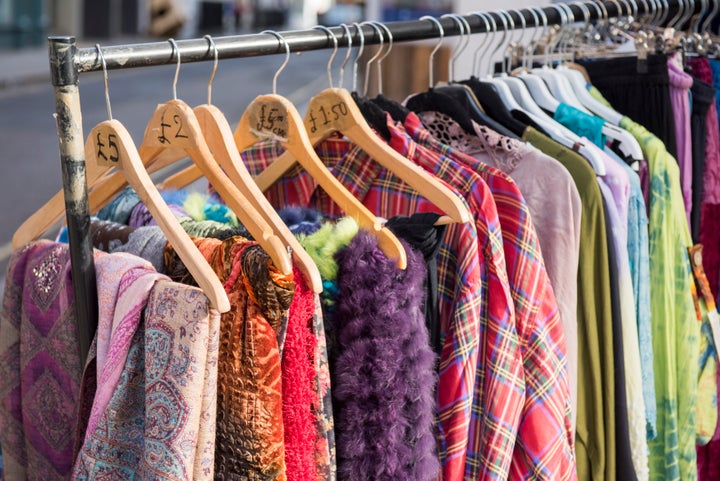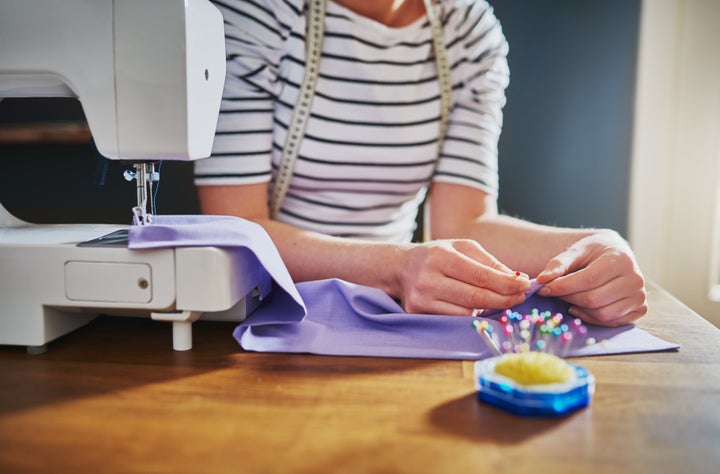Deep inside your wardrobe or buried in the depths of your over-stuffed drawers, we’ll bet there are a few lonely items you’ve either forgotten about entirely or rarely wear. How many of us have clothes, accessories or shoes we never make use of – yet somehow feel the urge to buy more? According to figures from Weight Watchers, the nation owns £10bn worth of clothes we simply don’t wear. Other estimates reckon we wear 20% of our wardrobe 20% of the time.
There’s a reason Marie Kondo has her work cut out. As a nation we’re hooked on fast fashion and it’s not just a waste of money but a drain on the environment, too. Cheap fabrics like polyester, nylon, polyamide and acrylic fibres, for example, can omit tiny pollutants into water systems. Against this backdrop, a small but growing trend of people are challenging themselves to stop buying so many clothes – or any at all.
If you’re thinking about giving up shopping but don’t know where to start, we asked three people who’ve managed it – a fashion fan, an elite runner and a former shopaholic – to share their tips on making it through a year of no purchases.

‘Look at what you already have – you’ll be surprised about the outfits you could cobble together.’
Bryanna Martonis, 26, who runs The Ecological blog, gave up buying clothes in February 2018 and has only purchased one new dress for her brother’s wedding and a second-hand jumper since. “Some things have been hard – especially turning down good deals like 70% off during the Boxing Day sales,” she admits. The key is “staying away from the shops if you know you can’t resist it” and reassessing what’s in your wardrobe instead. You’ll quickly realise you could make several outfits out of things you already have.
For Martonis, her staples include a black dress, a grey dress and a blue dress. “I find myself wearing these constantly,” she says. “They can be paired with a scarf, leggings, a cardigan. I have a lot of solid colour clothes but I also have items with funky patterns too, like polka dots and stripes and I look in Pinterest for inspiration on what to pair.”
[Read More: How To Marie Kondo Your Wardrobe To Spark Joy]
‘Realise clothes companies exist to make you buy stuff – we don’t actually need new things all the time’
Dan Lawson is a 45-year-old elite endurance runner from Brighton and a Team GB athlete. When he gave up buying clothes a year ago he has an epiphany: he didn’t actually need all that hi-tech top notch running gear to perform any better. Lawson runs more than 100 miles each week and in September extended his no-purchase rule to trainers. He has also founded a scheme called ReRun, which encourages people to donate and buy second hand running gear.
Putting his theory to the test, he has run 24-hour races in Taiwan and several 50-mile races in the UK in second hand gear. “In the past I’ve been sponsored by sports companies and I believed that I needed all the new, lighter gear – but it’s just not true, it hasn’t made any difference,” he says. “Once you start [giving up new clothes] you realise we all like to wear new stuff. God knows where it comes from – it’s probably primeval – but when you buy second hand it’s new for you. The fact it’s second hand doesn’t make any difference.”

‘Vow only to buy necessities – and buy second hand if you can.’
Nobody expects you to go pants-less or walk around in laddered, holey tights, so be realistic about what you can do without brand new. But shopping second hand is a really good way of making the most of items that have already been made. “I follow a few simple rules,” says Santa Meyer-Nandi, a 34-year-old from Paris, who runs a sustainability blog Finding Sustania and gave up shopping in 2014 for a year. She has since dramatically reduced what she buys.
“If I want a change in my wardrobe, such as a new dress, I buy it second hand and give away an existing item from my stock. For obvious reasons I do like to buy new underwear, tights and shoes, so I ask myself some questions before I [make a purchase]: Do I really need it? Do I really like it and does it go with several outfits?” It’s also important that the item is socially and environmentally responsible, as well as durable, says Meyer-Nandi, and Martonis agrees. Rather than shopping online for a new item she’ll look through a second hand shop, opting for durable materials that are also natural and Fairtrade.

‘Get into the repair and repurpose mindset.’
In our throwaway culture, we often replace things when they are broken rather than investing time and energy into fixing them, as previous generations would have done. Adjusting your mindset will help you see value in the things you own rather than chucking stuff in the bin and reaching for the shops.
Santa Meyer-Nandi says the biggest challenge she faced the year she made no purchases was finding a solution when the rain cover for her daughter’s buggy broke. “I was living in Norwich at that time and was searching all over to find a repair shop that would mend it. The shop keeper found me mad, since I could have bought a new one for a tenner,” she tells HuffPost UK. “Yet I stubbornly wanted to make it – so in the end I paid around £30 for an expensive professional adhesive tape and the problem was solved.”
Clothing is important to Meyer-Nandi who enjoys expressing herself through fashion. As a self-professed former “shopaholic” she has worked out a strategy for keeping stylish without purchasing anything new needlessly – she takes her clothing to a tailor who can transform old items into something new. Online services like The Clothes Doctor – which will pick up, mend and return your old clothes to you as good as new – are also well worth checking out.
